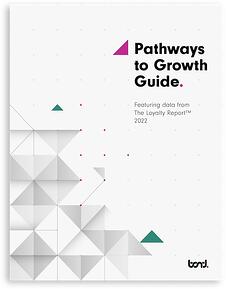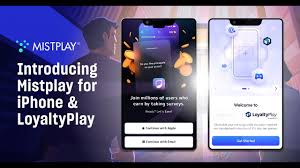First post-pandemic analysis of loyalty for consumers and brands reveals opportunities for growth, risks for marketers who don’t create connected experiences
Knowing customers = respecting time, sharing values, positive representative experience
TORONTO –The Loyalty Report™ 2022 reveals shifting consumer priorities and risks for brands and marketers who don’t stay connected to the emerging “new normal” expectations. The report—produced by Bond, a leading global data-driven customer growth firm, in partnership with Visa—is in its 12th year. Over the years, the study has engaged with nearly a quarter million consumers across 34 countries on thousands of programs, clubs, subscriptions, etc. As the most comprehensive evergreen data set of its kind, this year’s report will include more than 39K consumers across 11 markets in North America and Europe, capturing over 750 brands spanning 15 industries.
 After years of pandemic-level expectations, consumers across North America and Europe are increasingly clear they want to “be seen,” have their time valued, and they care about whom they choose to do business with. Discretionary spending is back on the rise and consumers are being purposeful about how they re-engage and what they now expect from brands.
After years of pandemic-level expectations, consumers across North America and Europe are increasingly clear they want to “be seen,” have their time valued, and they care about whom they choose to do business with. Discretionary spending is back on the rise and consumers are being purposeful about how they re-engage and what they now expect from brands.
Data from the report and Bond’s companion annual Marketer Survey indicate that while brands and customers seem aligned on things like the importance of customer service and exclusive access, there’s a disconnect on the level of importance of recognizing customers and making them feel known.
 “Experiences that save customers time and make it easy for them remain very important factors, but showing that you know and understand a customer is the highest driver of loyalty to a program right now,” said Sean Claessen (left), Chief Strategy Officer at Bond. “Customers are signaling that when you ‘show me you know me and recognize me,’ they will reward you with their loyalty, their advocacy, their retention, and their spend.”
“Experiences that save customers time and make it easy for them remain very important factors, but showing that you know and understand a customer is the highest driver of loyalty to a program right now,” said Sean Claessen (left), Chief Strategy Officer at Bond. “Customers are signaling that when you ‘show me you know me and recognize me,’ they will reward you with their loyalty, their advocacy, their retention, and their spend.”
Employees and brand representatives have an increasingly valuable role in delivering on “knowing me.” Consumers say that reps who “make me feel special and recognized” and who “proactively address my needs” are, respectively, the top two and three drivers of loyalty to a program, right behind “makes me feel valued and important”—which tops the list.
“The value brands can unlock from loyalty is nothing short of extraordinary, and modern data-driven experiences that consumers expect today are all about connecting with humanity,” said Claessen. He added, “Driving loyalty on ‘both sides of the counter’ is the clearest pathway to gains in customer growth.”
The report also confirms that when purpose is aligned to a customer’s values, it drives loyalty to their brand (more than an 8× lift in loyalty). Marketers, however, need to keep pace with the rapidly evolving consumer views on ESG and purpose-driven approaches: While “prioritizes environmentally sustainable practices” was the number two top driver of customer loyalty to a brand, only about 1/3 of marketers strongly agreed their brand is prioritizing this. Marketers are more likely to assume consumers prioritize “charitable causes,” and “diversity and inclusion”; however, it’s “equity,” “supporting local businesses,” and “climate consciousness” that we see consumers ranking higher as key drivers of their loyalty. But, ultimately, “treating employees fairly” is the number one driver from a consumer perspective.
The report covers brands who have invested in customer loyalty to drive their future growth and reveals the programs that are over-contributing or under-contributing to customer loyalty. The report further details that both membership enrollment (16.6) and active memberships (7.6) per person are holding steady. With the increase in new programs hitting the market over the past couple of years, and a finite share of engagement to compete for, it’s more critical than ever that brands focus on building experiences that drive loyalty amidst a growing sea of sameness.
To support the launch of this year’s study, Bond created a “Pathways to Growth Guide” that features report highlights as well as a series of deeper explorations on the insights and data in areas most closely linked to customer growth, including:
- The Missing “R” in CRM (revisiting the role of relationships)
- Values X Value: Woke Wave of ESG (doing well by doing good)
As well as future topics that include Loyalty: A Safe Harbor in a Cookie-less World (data depreciation and creating value for loyalty) and navigating the hype or help of NFTs, crypto, web 3.0, and more
The guide also features fast facts from the report as well as listings of top-ranked programs across key sectors, including Alaska Airlines, Marriott Bonvoy, Lego VIP, Kroger Plus, Sally Beauty Rewards, and Amazon Prime.
About Bond
Bond generates growth for clients by creating enduring relationships between people and brands based on intelligent connections and engaging experiences. Bond serves clients globally with customer experience and loyalty solutions that enable brands, customers, employees, partners, and the communities they serve, to experience the benefits of growth. Headquartered in Toronto, Bond is management-owned with more than 800 people and 9 offices across North America and Europe.




